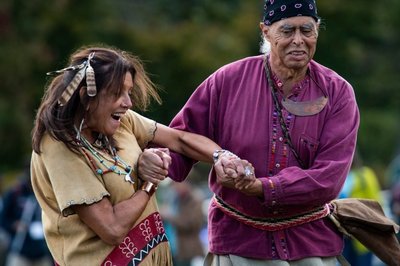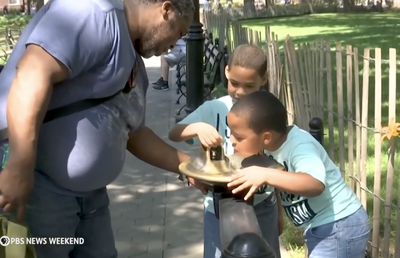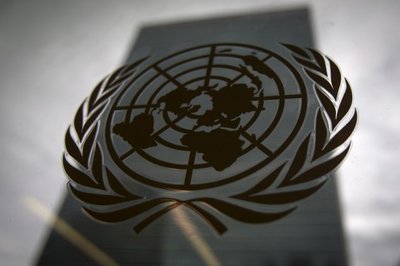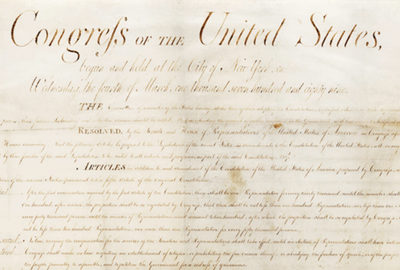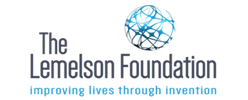by Kevin O'Reilly, social studies teacher of 35 years, Beverly, Mass.
For a Google doc version of this lesson, click here. You will be prompted to make a copy. Check out O'Reilly's Educator Voice piece, which accompanies this lesson.
“If it looks like a conspiracy, it’s a conspiracy. If it doesn’t look like a conspiracy, it’s definitely a conspiracy.” —from Rob Brotherton's "Suspicious Minds"
Introduction
This lesson explores how conspiracy theories get started and allows students to research a conspiracy theory on their own or in pairs and discuss their findings with the class.
Grades
9-12
Subjects
U.S. Government, U.S. History, Social Studies
Handouts
Student handout: https://docs.google.com/document/d/1BQswWgn4CHn1NFTpL6T7LWwEBttULnLZ1T4jKV1uh0E/copy
Possible answers teacher handout: https://docs.google.com/document/d/1w_FT-aTwvM7FRkHEMhH8eObbSDWH1MVX0_R67LKMAzk/copy
Warm up activity
Start by asking students how they define a conspiracy theory. Have students look up the definition online. Also ask them to define and research the term propaganda. Consider reading this article from University of Rhode Island's Media Education Lab on media and propaganda.
Ask them what conspiracies they have heard of, or show clips from the PBS News Hour linked below. Discuss the theories. What do they notice about them? What effects do conspiracy theories have?
Main activity
- Introduce the concept of conspiracy theories. The simple definition of a conspiracy theory includes the following: “(1) a group, (2) acting in secret, (3) to take power or hide truth, (4) at the expense of the common good.” (Psychology Today)
- Distribute or show the conspiracy theories in early American history from the student handout. Take a look at the teacher handout for suggested answers. Have students fill in true (T) or false (F) for each item. Tell students that they probably won’t have heard anything about some of these claims. In that case, they should evaluate the claim on its own merits: how plausible does it sound?
- Teachers can shorten the activity by selecting only some of the items from this list of conspiracy theories.
- Pair up students to discuss their responses; then discuss as a class. Which items are likely to be true? See suggested answers below.
- Switch to the discussion questions, first in pairs, then as a class. See suggested answers below.
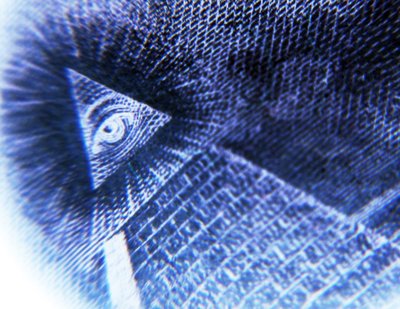
Illuminati. Photo by Steven Puetzer via Getty Images
BACKGROUND ON RECENT CONSPIRACIES
For background on recent conspiracy thinking, students can watch one or more of these PBS News Hour segments:
List of News Hour stories focused on conspiracy theories: https://www.pbs.org/newshour/tag/conspiracy-theories
Oct. 9. 2024: Hurricane Helene https://www.pbs.org/newshour/show/helene-recovery-complicated-by-lies-hoaxes-and-conspiracy-theories
Oct 22, 2022: Sandy Hook shooting https://www.pbs.org/newshour/nation/alex-jones-ordered-to-pay-965-million-to-sandy-hook-families
Jan 23, 2023: Oath Keepers and Jan. 6 https://www.pbs.org/newshour/politics/jury-finds-4-oath-keepers-guilty-of-seditious-conspiracy-in-jan-6-case
Aug 12, 2020: QAnon and Election 2020 https://www.pbs.org/newshour/show/what-is-qanon-how-the-conspiracy-theory-gained-traction-in-2020-campaign
***NOW COMPLETE THE STUDENT HANDOUT.***
Extend the lesson
Extend the lesson by assigning students to find a conspiracy theory not yet discussed in class and evaluate it according to the criteria they learned in this lesson.
Teacher's note: If you are concerned that an open-ended search for conspiracy theories could lead to unproductive controversy, you could assign a specific list of conspiracies from which students would choose one to evaluate.
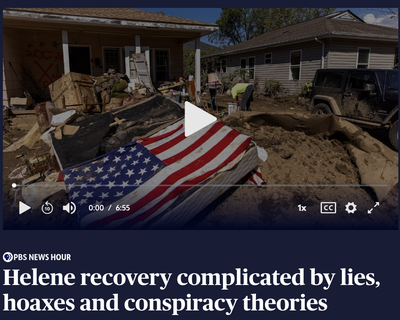
You could select from the conspiracies at the beginning of this article or include such conspiracies as:
- Hurricane Helene and the federal government's response
- the moon landing was a fake
- there are a flood of proposals to confiscate guns from law-abiding citizens
- the government is using chem trails from commercial airplanes to destroy crops to make people dependent on government food
- government vaccinations contain chips implanted in peoples’ bodies
- the federal government invented AIDS to kill Black people
- climate change is a hoax by liberals to increase government control over peoples’ lives
- Planned Parenthood is harvesting babies to be sold on the black market
Sources
Brotherton, Rob. "Suspicious Minds". New York: Bloomsbury, 2015.
Cortada, James and William Aspray. "Misinformation Nation". New York: Rowman & Littlefield, 2019.
Davis, David Brion. “Some Themes of Countersubversion: An Analysis of Anti-Masonic, Anti-Catholic, and Anti-Mormon Literature.” Chapter 4 in Curry, Richard and Thomas Brown, Eds. "Conspiracy: The Fear of Subversion in American History". New York: Holt, 1972.
Digital History. “The Slave Power Conspiracy.” 2021. https://www.digitalhistory.uh.edu/disp_textbook.cfm?smtid=2&psid=3272
Fee, Christopher and Jeffrey Webb. "Conspiracies and Conspiracy Theories in American History". Santa Barbara, CA: ABC-CLIO, 2019.
Hanchett, William. "The Lincoln Conspiracies". Urbana, IL: University of Illinois, 1983, Chapters 1-6.
Linder, Doug. “The Trial of the Lincoln Assassination Conspirators.” Famous Trials, University of Missouri, Kansas City School of Law, 2009. http://law2.umkc.edu/faculty/projects/ftrials/lincolnconspiracy/lincolnaccount.html
Shermer, Michael. "Conspiracy". Baltimore: Johns Hopkins University Pres, 2022.
Walker, Jesse. "The United States of Paranoia". New York: Harper, 2013.
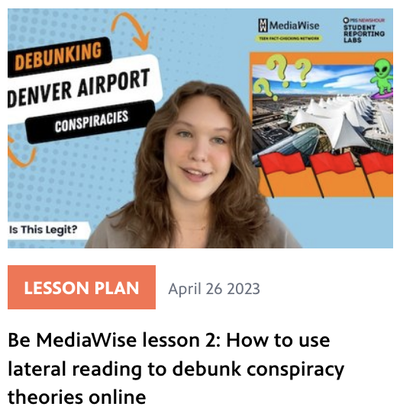
Standards
C3 FRAMEWORK STANDARDS
D2.Hist.10.9-12. Detect possible limitations in various kinds of historical evidence and differing secondary interpretations.
D2.Hist.17.9-12. Critique the central arguments in secondary works of history on related topics in multiple media in terms of their historical accuracy.
D3.2.9-12. Evaluate thew credibility of a source by examining how experts value the source.
D3.4.9-12. Refine claims and counterclaims attending to precision, significance and knowledge conveyed through the claim while pointing out the strengths and limitations of both.
COMMON CORE HISTORY/SOCIAL STUDIES READING STANDARDS
Grades 11-12 #8. Evaluate an author’s premises, claims and evidence by corroborating or challenging them with other information.
ABOUT THE AUTHOR
Kevin O'Reilly taught history for 35 years at Hamilton-Wenham Regional High School in Massachusetts and is the author of eight books on critical thinking and 19 books on decision-making in history. He was the NCSS Teacher of the Year and NCHE Paul Gagnon Prize winner. You can see his books and free lessons at https://www.criticalthinkinginhistory.com
Fill out this form to share your thoughts on Classroom’s resources.

